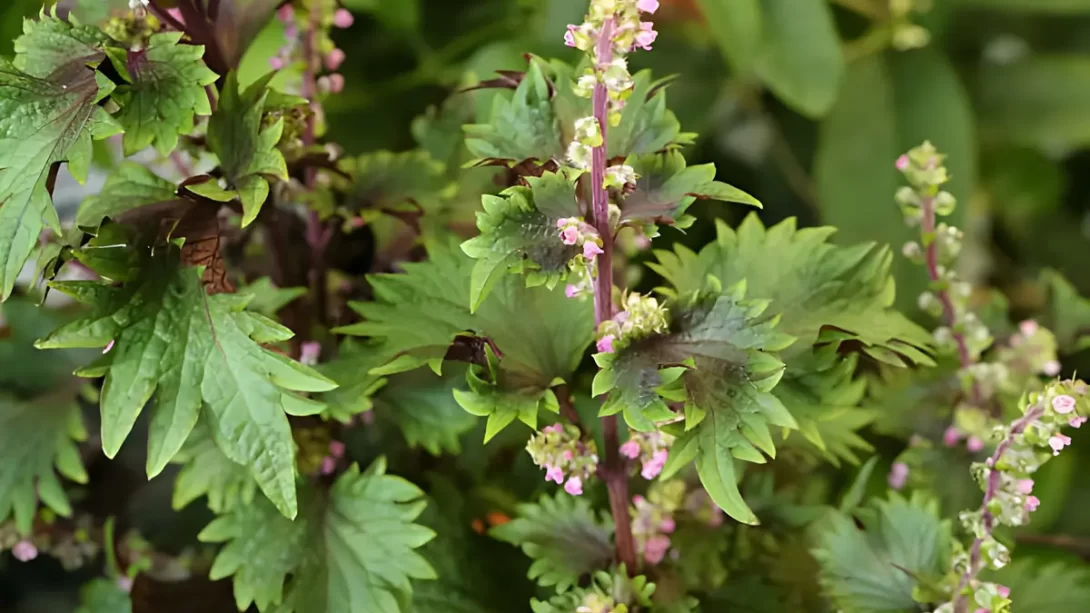Perilla leaves, known as Perilla frutescens, are a staple in Asian cuisine, cherished for their unique flavor and aroma. Originating from the mountainous regions of Asia, they have been a culinary and cultural mainstay in countries like Korea, Japan, and Vietnam. Perilla leaves are often compared to basil and mint due to their similar appearance but possess a distinct taste and fragrance that sets them apart. This introduction will explore the historical significance of perilla leaves and their role in various Asian culinary traditions.
Physical Characteristics of Perilla Leaves
Perilla leaves are easily recognizable by their broad, slightly rounded shape with serrated edges. They come in two main varieties: green and red (or purple), each with a slightly different flavor profile. Green perilla leaves, also known as deulkkae, are more common in Korean cuisine, while red perilla, known as akajiso in Japanese, is often used for coloring and pickling. The leaves are typically 2 to 4 inches in size and have a slightly rough, yet tender texture.
Flavor Profile of Perilla Leaves
The flavor of perilla leaves is complex and multifaceted. They have a unique combination of herbal, slightly anise-like, and a touch of citrusy notes. Green perilla leaves tend to have a fresher, more herbaceous flavor, while red perilla leaves exhibit a deeper, somewhat cinnamon-like taste. The flavor can also vary depending on the growing conditions, with sunlight and soil type influencing the intensity and nuances of the taste. This section will delve into the specific taste components that make perilla leaves a beloved ingredient in Asian cuisine.
Culinary Uses of Perilla Leaves
Perilla leaves are a versatile ingredient in many traditional Asian dishes. In Korean cuisine, they are often used in ssam (wrap) dishes, providing a fragrant bed for grilled meats or rice. Japanese cooking utilizes perilla in sushi and as a garnish for tempura. In Vietnamese cuisine, perilla is a common addition to spring rolls and salads. Modern culinary applications have expanded their use, incorporating them into fusion dishes, sauces, and even cocktails for an exotic flavor. Perilla leaves pair well with a variety of flavors, including garlic, soy sauce, sesame oil, and seafood, bringing a unique depth to any dish they are added to.
Nutritional and Medicinal Benefits
Aside from their culinary uses, perilla leaves are also known for their nutritional and medicinal properties. They are rich in vitamins, minerals, and antioxidants, making them a healthy addition to any diet. Traditionally, in Asian medicine, perilla leaves have been used to treat a range of ailments, from asthma to indigestion. Recent research has begun to explore these benefits further, investigating the potential anti-inflammatory and anticancer properties of perilla leaves. This section will highlight the health benefits of incorporating perilla leaves into your diet, backed by scientific research and traditional knowledge.
Storing and Preparing Perilla Leaves
To maintain the freshness and flavor of perilla leaves, proper storage is key. They should be kept in a cool, dry place or refrigerated to extend their shelf life. When preparing perilla leaves, they can be used whole or chopped, depending on the dish. Washing and drying the leaves gently is important to preserve their delicate texture and flavor. Perilla leaves can also be preserved by pickling or drying, allowing them to be enjoyed year-round. This part of the article will provide practical tips for handling, preparing, and preserving perilla leaves, ensuring they retain their distinctive taste and aroma.
Conclusion
In conclusion, perilla leaves (Perilla frutescens) offer a unique and delightful flavor that has been cherished in Asian cuisines for centuries. Their complex taste, blending herbal, anise-like, and citrusy notes, makes them a versatile and intriguing ingredient in a wide range of dishes. Whether used fresh in wraps and salads or as an aromatic garnish, perilla leaves can elevate the culinary experience with their distinctive flavor profile.
Beyond their culinary appeal, perilla leaves are also valued for their nutritional and medicinal properties. Rich in essential nutrients and possessing potential health benefits, they are a wonderful addition to a healthy diet. The traditional medicinal uses of perilla, supported by emerging scientific research, add another layer to their significance.
For gardeners, chefs, and food enthusiasts, experimenting with perilla leaves can open up new avenues of flavor and creativity in the kitchen. Their unique taste and health benefits make them a worthwhile addition to any culinary repertoire. Understanding how to store, prepare, and preserve perilla leaves ensures that their distinct qualities are maximized in every dish.
As we continue to explore and embrace diverse ingredients from around the world, the perilla leaf stands out as a testament to the rich culinary heritage of Asia and the endless possibilities that plants offer to our palates and health. Whether you’re a seasoned chef or a curious foodie, incorporating perilla leaves into your cooking can be a rewarding and flavorful journey.



